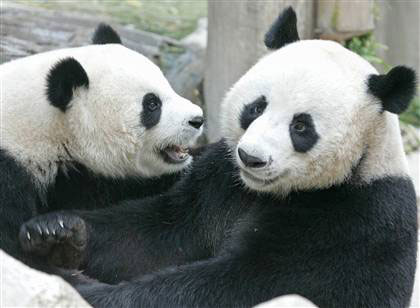Porn sparks panda baby boom in China
(AP)Updated: 2006-11-23 08:33
A bit of panda porn has helped too, they say.
It is one of many techniques tried over the decades to get captive pandas -- notoriously poor breeders -- to do it, and do it right. The efforts to understand and simulate conditions for mating and raising cubs have paid off in China, the panda's native habitat. Now comes the next test: getting the magic to work outside China.
The big day will come in January, when Prasertsak Buntragulpoontawee hopes to bring off a successful mating between male Chuang Chuang and partner Lin Hui in this northern Thailand city.
The audio-visual approach "is the same idea as chimpanzees seeing people smoke and then copying it," says the Thai researcher.
Zhang, director of the Chengdu Research Base of Giant Panda Breeding, attributes this year's record high births not to any single breakthrough but to an accumulation of research on panda biology, nutrition and genetics while "trying to imitate nature better."
The result, by his count: In the first 10 months of this year 31 cubs were born in captivity in China, of which 28 survived. That's up from 12 births in 2005 and just nine in 2000. Of this year's births, 14 came through natural breeding, while artificial insemination or a combination of the two produced the rest.
No cubs were born among the roughly 20 pandas outside China, but sperm from Atlanta Zoo's Yang Yang yielded an offspring for Lun Lun in Chengdu, China, Zhang told a conference here of 140 panda experts.
JoGayle Howard, an animal reproduction specialist at the Smithsonian Institution in Washington, D.C., said the goal of raising the captive breeding population to 300 from the current 220 is rapidly being reached. This would prevent inbreeding, widen the genetic pool and enable more captive animals to re-enter the wild, where the panda population is estimated at 1,600 to 3,000.
Howard said the biggest challenges in panda breeding are an extremely high rate of incompatibility and the very narrow window of opportunity -- females are ready to mate for as few as 48 hours a year.
"At first people thought that you just put two animals
together and they would figure it out. But it didn't turn out that way," she
said. "Now we know how to take care of the panda better. We've really made
progress. But we're still learning a lot of even basic things."
| 1 | 2 |  |
|
||
|
||
|
|

